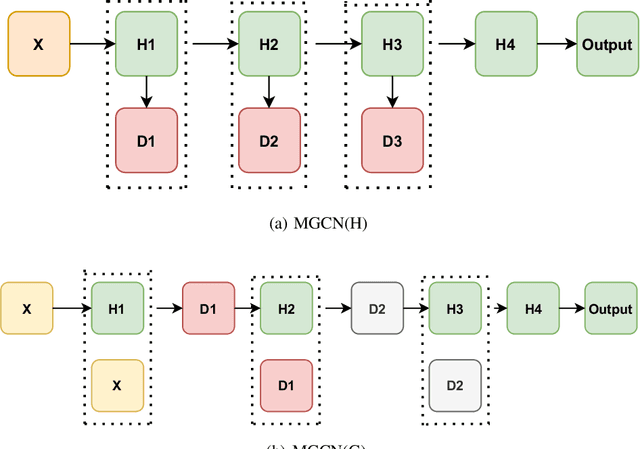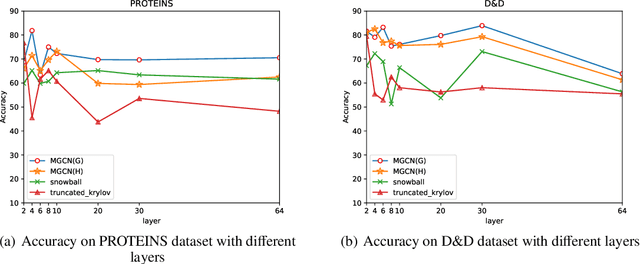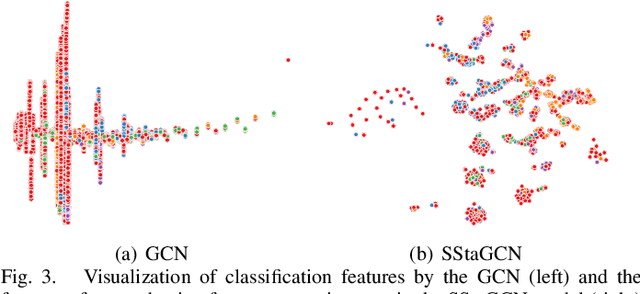Zhilong Xiong
Multi-scale Graph Convolutional Networks with Self-Attention
Dec 04, 2021



Abstract:Graph convolutional networks (GCNs) have achieved remarkable learning ability for dealing with various graph structural data recently. In general, deep GCNs do not work well since graph convolution in conventional GCNs is a special form of Laplacian smoothing, which makes the representation of different nodes indistinguishable. In the literature, multi-scale information was employed in GCNs to enhance the expressive power of GCNs. However, over-smoothing phenomenon as a crucial issue of GCNs remains to be solved and investigated. In this paper, we propose two novel multi-scale GCN frameworks by incorporating self-attention mechanism and multi-scale information into the design of GCNs. Our methods greatly improve the computational efficiency and prediction accuracy of the GCNs model. Extensive experiments on both node classification and graph classification demonstrate the effectiveness over several state-of-the-art GCNs. Notably, the proposed two architectures can efficiently mitigate the over-smoothing problem of GCNs, and the layer of our model can even be increased to $64$.
SStaGCN: Simplified stacking based graph convolutional networks
Nov 16, 2021



Abstract:Graph convolutional network (GCN) is a powerful model studied broadly in various graph structural data learning tasks. However, to mitigate the over-smoothing phenomenon, and deal with heterogeneous graph structural data, the design of GCN model remains a crucial issue to be investigated. In this paper, we propose a novel GCN called SStaGCN (Simplified stacking based GCN) by utilizing the ideas of stacking and aggregation, which is an adaptive general framework for tackling heterogeneous graph data. Specifically, we first use the base models of stacking to extract the node features of a graph. Subsequently, aggregation methods such as mean, attention and voting techniques are employed to further enhance the ability of node features extraction. Thereafter, the node features are considered as inputs and fed into vanilla GCN model. Furthermore, theoretical generalization bound analysis of the proposed model is explicitly given. Extensive experiments on $3$ public citation networks and another $3$ heterogeneous tabular data demonstrate the effectiveness and efficiency of the proposed approach over state-of-the-art GCNs. Notably, the proposed SStaGCN can efficiently mitigate the over-smoothing problem of GCN.
 Add to Chrome
Add to Chrome Add to Firefox
Add to Firefox Add to Edge
Add to Edge